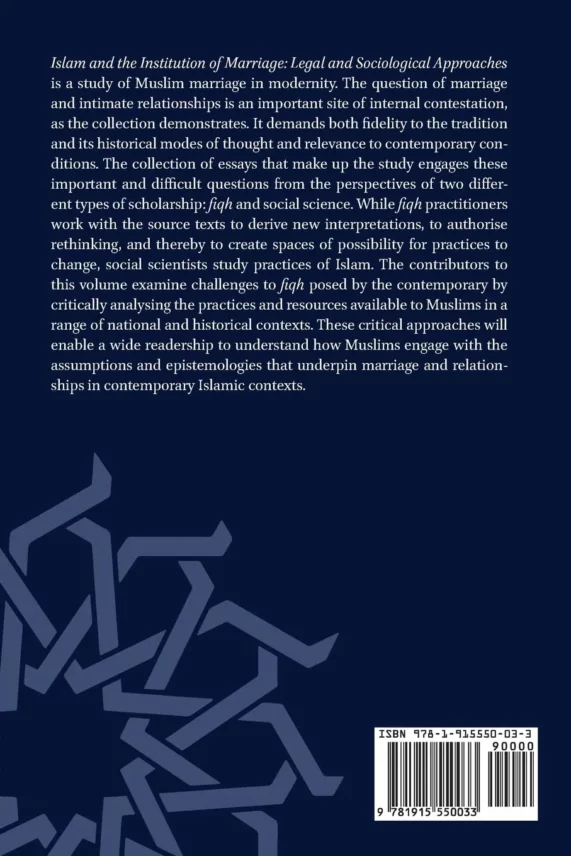“The Institution of Marriage in Islam: A Case Study of the First Pillar of the Marriage Contract” in Katherine Lemons and Laurens de Rooij (eds.). Islam and the Institution of Marriage: Legal and Sociological Approaches. Birmingham, U.K.: AMI Press, 2023, pp. 35-53.

Abstract
The Institution of Marriage in Islam – except for sexual relationships and its domain- has been classified in human interactions (mu’amalat), which means it is not ‘beyond rational matters’ (tawqifiyyat). Therefore, all of its elements are open to being revisited according to ‘structural ijtihad in principles and foundations’, not ‘traditional ijtihad in derivatives’ (ijtihad fi al-furou’ al-fiqhiyyah)-.
The pillars (arkan) of a legitimate marriage (al-zawaj al-shar’i) in Islam between two adult males and females – that is not any legitimate obstacle (al-mani’ al-shar’i) for their marriage – are two: 1) clear consent of two parties themselves for marriage, and 2) binding an agreement of marriage so that they become husband and wife based on this contract.
No legitimate marriage in Islam is meaningful without a contract (‘aqd). The marriage contract could be an unwritten contract (‘aqd ghair al-maktoub). It could be not submitted to a legal center for marriage. More important, pronouncing the verbal shar’i formulation of marriage (al-sigha al-shar’iyya li al-ziwaj) neither in Arabic nor in other languages is not necessary for a legitimate marriage contract. The major point of the second pillar of the legitimate marriage contract is this: the male and female parties recognize themselves as husband and wife respectively as the product of the marriage contract between them.
‘Non-verbal conventional marriage’ (nikah mu’atati) is a legitimate marriage because both pillars of marriage were observed in it. A man and a woman are satisfied with each other’s marriage, and a woman is legitimately married to a man. The only difference is that the marriage contract is not pronounced. Is the Western style of partnership ‘cohabitation’ equivalent to non-verbal conventional marriage? Not necessarily. If and only if, the cohabitation of a man and a woman has taken place with a marriage contract (even if it is not written, not submitted anywhere, or even not pronounced), it is permissible to apply the non-verbal conventional marriage to it. A written marriage contract and especially its submission in a legal center for marriage is closer to caution for a time of frequent disagreement.
Because different names were given to ‘cohabitation’ in different cultures and legal systems and they do not have an agreed meaning and condition, wherever both pillars are observed under any title, it is permissible, and it is not permissible without these two.
This paper comprises three sections: presenting fatwas on the first pillar of marriage; examining arguments of the utterance of the verbal formula as the first pillar of a legitimate marriage; and finally revisiting the first pillar based on ‘structural ijtihād’.


